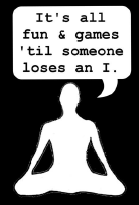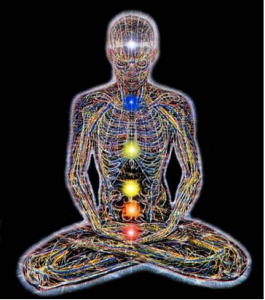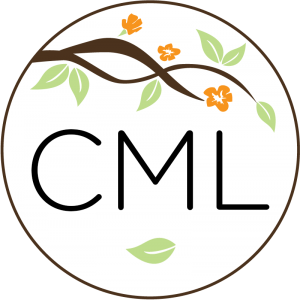
“Integrated meditation practice is like a healthy diet which is indispensable for maintaining your vitality and resistance to disease. Likewise, a balanced meditative practice in the course of a socially engaged way of life heightens your psychological immune system, so that you are less vulnerable to mental imbalances of all kinds.”Alan Wallace
As a general framework of the spiritual path, we can think of all practice as a way to achieve greater balance in 6 core areas that are common to all frameworks of spiritual practice.
The middle way philosophy is an attempt to find a balance between the two extremes of eternalism (self and world are inherently real and self existent) and nihilism (self and world are not real and do not exist at all). It is by finding this balance, seeing that there is another option which is neither eternalism or nihilism. Seeing that self and world are a codependent arising, meaning they exist only in a interconnected web of relationship.
As we find our self in imbalance we may fall in one of three categories; too much, too little and wrong. Having an excess, a deficiency or a incorrect view that does not accord with reality. For example, regarding attentional balance, if we have too much we might call that Attention Deficit Hyperactivity Disorder (ADHD). If we have too little we might call that attention deficit disorder (ADD). If we apply our attention in a wrong way we primarily direct our attention in ways that contribute to our own and others’ suffering.
I find this model a useful one in order to categorize the core areas that must be balanced in a well rounded spiritual/mystical practice. Each area has various techniques from various traditions that may aid to achieve balance. Which technique and which tradition is not important, what matters is finding what works for each individual and that balance is actually achieved. I could be wrong, but as far as I can tell through my own study and practice I see these 6 areas as necessary. Where issues occur in one’s own practice is where there is not a balance between the 6, only emphasizing a few and ignoring the rest.
Here is a brief explanation of each area of balance:
 Conative balance has to do with our intention and motivation, a way of life that is rooted in ethics and virtue. We can’t expect to be emotionally balanced ourselves if we are living a life that creates emotional imbalance for others.
Conative balance has to do with our intention and motivation, a way of life that is rooted in ethics and virtue. We can’t expect to be emotionally balanced ourselves if we are living a life that creates emotional imbalance for others.
 Attentional balance is making our mind serviceable. Being able to direct our attention at will. To think when you want and be able to keep the mind still when there is no need to think. To some extent we all suffer from OCDD (Obsessive Compulsive Delusional Disorder). We have a constant stream of thoughts running through our minds, we tend to identify with these thoughts and we think they are the truth and nothing but the truth. To attain attentional balance is to rid our selves of this disorder and have a mind, instead of the mind having you.
Attentional balance is making our mind serviceable. Being able to direct our attention at will. To think when you want and be able to keep the mind still when there is no need to think. To some extent we all suffer from OCDD (Obsessive Compulsive Delusional Disorder). We have a constant stream of thoughts running through our minds, we tend to identify with these thoughts and we think they are the truth and nothing but the truth. To attain attentional balance is to rid our selves of this disorder and have a mind, instead of the mind having you.
 Cognitive balance allows us to see reality as it actually is. By removing our cognitive bias and distinguishing what is actually being presented to our senses and what we are super imposing on that experience. To not identify with every thought or emotion that happens to us with out our asking. To see that all phenomena are impermanent, not intrinsically satisfying and not who we are.
Cognitive balance allows us to see reality as it actually is. By removing our cognitive bias and distinguishing what is actually being presented to our senses and what we are super imposing on that experience. To not identify with every thought or emotion that happens to us with out our asking. To see that all phenomena are impermanent, not intrinsically satisfying and not who we are.
 Emotional Balance is the result of having attained some level in the other categories. If we are working in all the critical areas Emotional balance comes for free
Emotional Balance is the result of having attained some level in the other categories. If we are working in all the critical areas Emotional balance comes for free ![]() although there is something we can do to specifically strengthen the emotional balance that is present on the foundation of Conative, Attentional and Cognitive. By intentionally cultivating positive states such as Loving Kindness, Compassion, Empathetic Joy and Equanimity. Familiarizing our selves with these qualities of mind so that they occur spontaneously.
although there is something we can do to specifically strengthen the emotional balance that is present on the foundation of Conative, Attentional and Cognitive. By intentionally cultivating positive states such as Loving Kindness, Compassion, Empathetic Joy and Equanimity. Familiarizing our selves with these qualities of mind so that they occur spontaneously.
 Physical Balance is having a healthy functional body. It is true that we are not our bodies but as long as we are alive we still have to deal with one. So why not be as kind and gentle with it as we can. They main goal of physical balance is to develop the strength and flexibility needed to have a stable and comfortable meditation posture. We might not have the luxury of being totally free of pain, but we can use the intelligent science of Yoga to work with what we have and make it as optimal as we can.
Physical Balance is having a healthy functional body. It is true that we are not our bodies but as long as we are alive we still have to deal with one. So why not be as kind and gentle with it as we can. They main goal of physical balance is to develop the strength and flexibility needed to have a stable and comfortable meditation posture. We might not have the luxury of being totally free of pain, but we can use the intelligent science of Yoga to work with what we have and make it as optimal as we can.
 Energetic Balance is having a healthy and functional subtle body. Most of the difficulties that end up in the physical body stems from and imbalance in the subtle body. The subtle body is where we store all of our emotional and physical trauma collected over our entire life. It is helpful to become aware of what the subtle body is, how it affects us and how we can heal it. By developing energetic balance we are in a better position to explore the depths of the mind with out being disturbed by the fluctuations of energetic imbalance.
Energetic Balance is having a healthy and functional subtle body. Most of the difficulties that end up in the physical body stems from and imbalance in the subtle body. The subtle body is where we store all of our emotional and physical trauma collected over our entire life. It is helpful to become aware of what the subtle body is, how it affects us and how we can heal it. By developing energetic balance we are in a better position to explore the depths of the mind with out being disturbed by the fluctuations of energetic imbalance.

